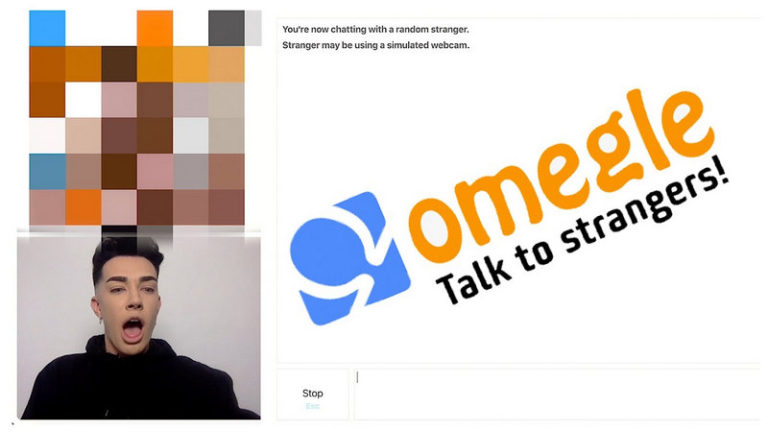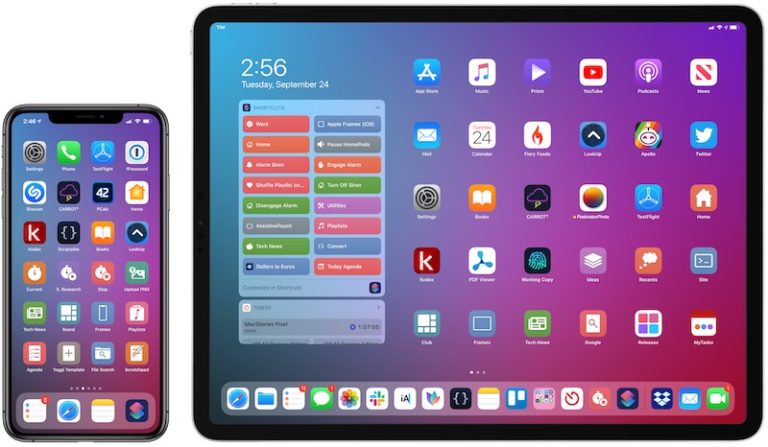Snapchat is a multimedia messaging app created by Evan Spiegel, Bobby Murphy, and Reggie Brown, while they were students at Stanford University. Launched in 2011, Snapchat quickly gained popularity, particularly among young adults and teenagers, due to its unique features and focus on privacy.
One of Snapchat’s key features is the ability to send photos and videos, known as “snaps,” that disappear after being viewed. This ephemeral nature of Snapchat messages appealed to users, especially those who were concerned about privacy and wanted to share moments without leaving a permanent digital footprint.
Snapchat also introduced “Stories,” a feature that allows users to post photos and videos that can be viewed by their friends for 24 hours before disappearing. This feature became immensely popular and helped Snapchat differentiate itself from other social media platforms.
Additionally, Snapchat’s playful filters and lenses, which allow users to add fun effects to their photos and videos, became a hit among young users, further contributing to the app’s popularity.
Snapchat’s unique features, focus on privacy, and appeal to younger audiences have contributed to its widespread popularity among users, particularly young adults and teenagers.
Contents
Why is Snapchat famous for sexting?
Sexting refers to the act of sending sexually explicit messages, photos, or videos, typically between mobile phones. It has become increasingly common, especially among young adults and teenagers.
Snapchat has become synonymous with sexting due to its ephemeral nature. Users can send snaps (photos or videos) that disappear after being viewed, which can give a false sense of security and privacy. This feature has made Snapchat a popular platform for sexting, as users may feel more comfortable sharing sensitive content knowing that it will not be permanently stored or visible to others. However, it’s important to note that even though snaps disappear, recipients can still take screenshots or use other methods to save the content, so caution should be exercised when sexting on any platform.
Risks of Snapchat Sexting
Sexting on Snapchat can have serious risks and consequences. One of the main concerns is privacy. Snapchat’s disappearing messages feature, known as “ephemeral messaging,” can contribute to a false sense of security when it comes to sexting. Users may believe that because messages disappear after being viewed, they are safe from being saved or shared without their consent. However, this is not entirely true.
While Snapchat messages do disappear from the app after being viewed, there are ways for recipients to save them. For example, they can take a screenshot of the message before it disappears. While Snapchat notifies the sender if a screenshot is taken, this doesn’t prevent the recipient from saving the content.
Additionally, there are third-party apps and techniques that can be used to save Snapchat messages without the sender’s knowledge. This means that even though the messages are designed to be temporary, they can still be preserved and shared later.
There are also legal implications to consider. In many places, sending or receiving explicit images of minors (those under 18) can be considered child pornography, even if the images are sent voluntarily. This can lead to criminal charges and have long-lasting consequences for those involved.
Additionally, sexting can have emotional and psychological effects. It can lead to feelings of regret, embarrassment, or even harassment if the content is shared without permission. Young people may also face bullying or social stigma if their sexts are made public.
It’s important for users to understand these limitations and to be cautious when sending sensitive or explicit content on Snapchat. While the disappearing messages feature can provide a level of privacy, it’s not foolproof, and users should always consider the potential risks before sending any content.
Parents and educators should also educate young people about the potential consequences and help them navigate these issues safely.
Legal Implications
Sexting, particularly when involving minors, can have serious legal implications. In many jurisdictions, sending, receiving, or possessing explicit images of minors (under 18 years old) can be considered child pornography, even if the images are self-produced and consensually shared. This can lead to criminal charges, including possession, distribution, or production of child pornography.
Even among adults, sexting can have legal consequences. Sharing explicit images without the consent of the person depicted can violate privacy laws. Additionally, if the images are shared with a minor, it can lead to charges of distributing harmful material to a minor.
It’s important to be aware of the laws in your jurisdiction regarding sexting and to understand the potential legal risks involved. Always obtain consent before sharing any explicit content, and be cautious when sharing sensitive material, especially with minors.
To stay safe and legal while using Snapchat, consider the following advice:
Know the Laws: Familiarize yourself with the laws in your jurisdiction regarding sexting and the sharing of explicit content. Understand the legal age of consent and the potential consequences of sharing explicit content, especially with minors.
- Obtain Consent: Always obtain explicit consent before sending or sharing any explicit content. Consent should be freely given, informed, and enthusiastic.
- Respect Privacy: Respect the privacy of others by not sharing or distributing their explicit content without their consent. Be mindful of the potential consequences of sharing sensitive material.
- Use Discretion: Be cautious when sharing explicit content, even on platforms like Snapchat where messages are designed to disappear. Remember that screenshots, third-party apps, or other means can still be used to capture and save content.
- Be Aware of Age: Ensure that you are aware of the age of the person you are communicating with and that they are of legal age to engage in sexting or explicit content sharing.
- Report Inappropriate Behavior: If you encounter inappropriate behavior or receive unsolicited explicit content, report it to the platform and, if necessary, to the appropriate authorities.
- Educate Yourself: Stay informed about the latest trends and issues related to online safety, privacy, and sexting. Being aware of the risks can help you make more informed decisions.
Remember, while Snapchat and similar platforms offer privacy features, they do not guarantee complete privacy or protection from legal consequences. Use these platforms responsibly and consider the potential impact of your actions on yourself and others.
Tips for Safe Sexting on Snapchat
When sexting on Snapchat, it’s important to take steps to protect your privacy. Here are some tips:
Use Privacy Settings
Adjust your privacy settings to control who can view your snaps and stories. Choose to only allow friends to view your content to limit exposure.
Limit Sharing
Avoid sharing sensitive personal information, such as your full name, address, or phone number, in your snaps or chats.
Be Selective with Friends
Only add people you trust as friends on Snapchat. Avoid accepting friend requests from strangers or people you don’t know well.
Use Disappearing Messages
Take advantage of Snapchat’s disappearing messages feature for more sensitive content. Set a timer on your messages to ensure they disappear after they are viewed.
Avoid Screenshots
Be cautious about sending content that could be easily captured in a screenshot. Consider the trustworthiness of the recipient before sending sensitive material.
Report Inappropriate Behavior
If you receive unsolicited explicit content or encounter inappropriate behavior, report it to Snapchat immediately.
Be Mindful of Location
Avoid sharing your location in your snaps or stories, especially if it reveals sensitive information about your whereabouts.
Use Strong Passwords
Ensure your Snapchat account is secure by using a strong, unique password and enabling two-factor authentication for added security.
Think Before You Send
Always think carefully before sending explicit content. Consider the potential consequences and whether you trust the recipient to respect your privacy.
How Can I Protect My Privacy While Sexting on Snapchat
By following these tips, you can help protect your privacy while sexting on Snapchat.
Handling unwanted advances or explicit content on Snapchat requires assertiveness and setting clear boundaries.
Here are some steps to take:
Block the User
If someone is sending unwanted advances or explicit content, block them immediately. This will prevent them from contacting you further.
Report the User
Use Snapchat’s reporting feature to report the user for inappropriate behavior. This helps ensure the platform remains a safe space for everyone.
Keep Evidence
If you feel threatened or harassed, keep a record of the messages or snaps as evidence. This can be useful if you need to take further action.
Seek Support
Talk to someone you trust about the situation, such as a friend, family member, or counselor. They can provide support and help you decide on the best course of action.
Set Boundaries
Clearly communicate your boundaries to the person sending the unwanted content. Let them know that their behavior is not acceptable and that you will not tolerate it.
Use Privacy Settings
Adjust your privacy settings to limit who can contact you and view your content. This can help prevent unwanted advances in the future.
Consider Legal Action
If the unwanted advances are severe or persistent, you may want to consider taking legal action. Contacting law enforcement or seeking legal advice can help you understand your options.
It’s important to prioritize your safety and well-being in any situation involving unwanted advances or explicit content. Trust your instincts and take action to protect yourself.
Parental Concerns and Monitoring
Parents are often concerned about their teenagers using Snapchat for sexting due to the potential risks involved. Here are some common parental concerns:
- Privacy: Parents worry about their child’s privacy and the risk of their child’s personal information or explicit content being shared without their consent.
- Safety: Parents are concerned about their child’s safety, both online and offline, when engaging in sexting on Snapchat. They worry about the potential for their child to be targeted by predators or to engage in risky behavior.
- Legal Consequences: Parents are aware of the legal implications of sexting, especially when it involves minors. They worry about the potential for their child to face legal consequences for sharing explicit content.
- Emotional Impact: Parents are concerned about the emotional impact of sexting on their child, including issues related to self-esteem, body image, and relationships.
- Peer Pressure: Parents worry about the influence of peer pressure on their child’s decision to engage in sexting. They want to ensure that their child feels empowered to make safe and healthy choices.
To address these concerns, parents can have open and honest conversations with their teenagers about the risks of sexting and the importance of respecting themselves and others online. They can also set clear boundaries and monitor their child’s online activity to help keep them safe.
Monitoring children’s Snapchat activity can be challenging due to the app’s ephemeral nature, but there are several strategies parents can use to stay informed and educate their children about the risks of sexting:
Open Communication
Maintain open and honest communication with your children about their online activities, including their use of Snapchat. Encourage them to come to you with any concerns or questions.
Set Boundaries
Establish clear rules and guidelines for using Snapchat, including when and where it’s appropriate to use the app. Discuss the importance of respecting others’ privacy and not sharing inappropriate content.
Monitor Usage
Use parental control apps or built-in features on your child’s device to monitor their Snapchat activity. These tools can help you keep track of who they’re communicating with and what content they’re sharing.
mSpy is a powerful monitoring tool that allows parents to monitor their children’s Snapchat activity. With mSpy, parents can view all incoming and outgoing messages, photos, and videos on Snapchat, even if they are deleted from the target device. Additionally, mSpy provides access to timestamps and contact information for each message, allowing parents to keep track of who their children are communicating with. This can help parents identify any inappropriate or potentially harmful behavior and take appropriate action to protect their children.
Educate About Privacy Settings
Teach your children how to use Snapchat’s privacy settings to control who can see their content. Encourage them to only share content with people they trust.
Discuss Consequences
Talk to your children about the potential consequences of sexting, including legal and emotional ramifications. Help them understand the importance of thinking before they send a message or image.
Lead by Example
Be a positive role model for your children by practicing safe and respectful online behavior yourself. Show them how to use technology responsibly.
Stay Informed
Keep up-to-date with the latest trends and developments in social media and online safety. This will help you better understand the challenges your children may face and how to address them.
By staying involved in your children’s online activities and having open conversations about the risks of sexting, you can help them make safe and responsible choices while using Snapchat.
Conclusion
It’s essential for individuals, especially young adults and teenagers, to understand the risks and consequences associated with sexting on platforms like Snapchat. While these platforms offer fun and engaging ways to connect with others, users must be aware of the potential dangers and take steps to protect themselves.
Parents play a crucial role in educating their children about these risks and monitoring their online activity to ensure their safety. By promoting open and honest conversations about online behavior and setting clear boundaries, parents can help their children make informed decisions and avoid potential pitfalls.
Ultimately, practicing safe and responsible online behavior is key to maintaining privacy, protecting personal information, and avoiding legal issues. By staying informed and vigilant, individuals can enjoy the benefits of social media while minimizing the risks.
Faqs
Does Snapchat allow sexting?
Snapchat does not allow explicit content, including sexting, on its platform. The app’s Community Guidelines prohibit users from sending or receiving explicit content, and it actively monitors and removes such content. However, because of the nature of the app’s disappearing messages and privacy features, some users may attempt to use Snapchat for sexting.
How do people find local Snapchat girls?
Here are some general tips for finding local Snapchat users:
- Use Snapchat’s “Add Nearby” feature: This feature allows pepple to add people who are nearby and have the feature enabled. To use it, go to your profile, tap “Add Friends,” then “Add Nearby.”
- Join local Snapchat groups or communities: Look for local groups or communities on social media platforms or forums where Snapchat users gather. You may find people interested in connecting with others in your area.
- Use location-based hashtags: Search for hashtags related to your location on social media platforms like Twitter or Instagram. People often include their Snapchat usernames in posts using location-based hashtags.
- Share Snapchat username: Let your friends and followers know your Snapchat username and that you’re looking to connect with local users. They may be able to introduce you to people in your area.
How many people use Snapchat for sexting?
There isn’t a specific number or statistic available for the exact number of people who use Snapchat for sexting, as this behavior can vary greatly among users. Sexting is a personal and private activity, and many people may choose not to disclose or discuss it publicly.
Can you get hookups on Snapchat?
Yes, it’s possible to find people interested in hookups on Snapchat. However, it’s important to use caution and respect others’ boundaries and privacy. Make sure to communicate clearly and responsibly, and always prioritize your safety when interacting with others online.
Can police see Snapchat photos?
Snapchat photos and messages are designed to disappear after they are viewed, and Snapchat states that they are deleted from their servers after they are opened. However, it’s important to note that nothing online is completely private, and there may be ways for law enforcement to access Snapchat data in certain circumstances, such as with a valid legal request. It’s always best to use caution and consider the privacy implications of what you share online.
Can I find a girlfriend on Snapchat?
Finding a girlfriend or meaningful relationship on Snapchat is possible, as many people use the platform for socializing and connecting with others. However, it’s important to approach interactions respectfully and considerately, as with any social platform. Building a genuine connection takes time and effort, so focus on getting to know people, engaging in meaningful conversations, and respecting their boundaries.
Is Snapchat safe to send private pictures?
Sending private pictures on Snapchat can be relatively safe due to its disappearing message feature. However, it’s essential to remember that nothing shared online is entirely secure. While Snapchat’s design makes it more difficult for others to save or share your pictures without your knowledge, it’s still possible for recipients to take screenshots or use other methods to save the content. Always exercise caution and only share private pictures with trusted individuals.
Does Snapchat block inappropriate content?
Snapchat has community guidelines and mechanisms in place to detect and prevent inappropriate content. The platform uses a combination of automated systems and human moderators to monitor content and remove anything that violates its guidelines. Users can also report inappropriate content, which is then reviewed by Snapchat’s team. However, it’s important to note that no system is perfect, and some inappropriate content may still be present on the platform.





